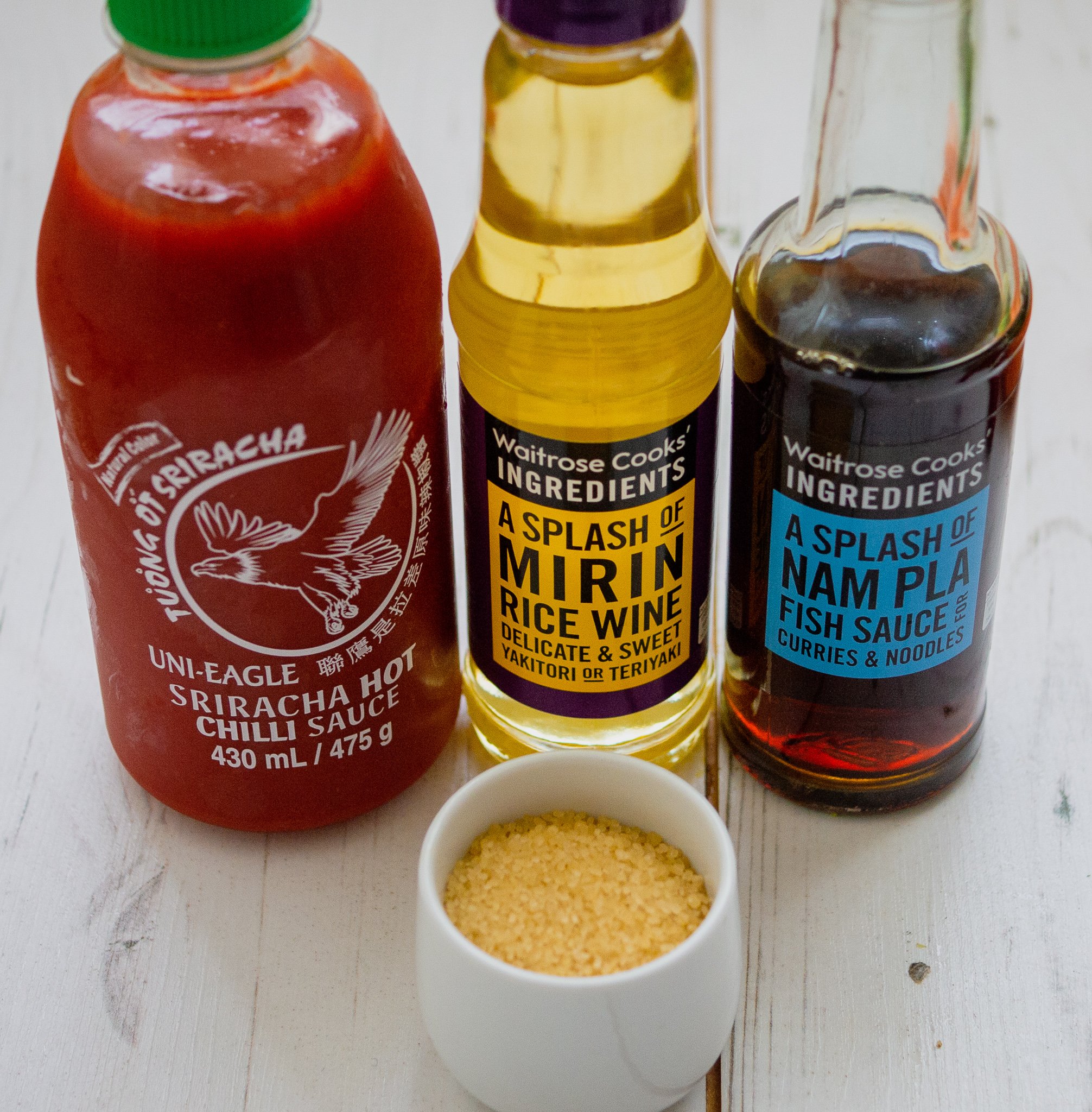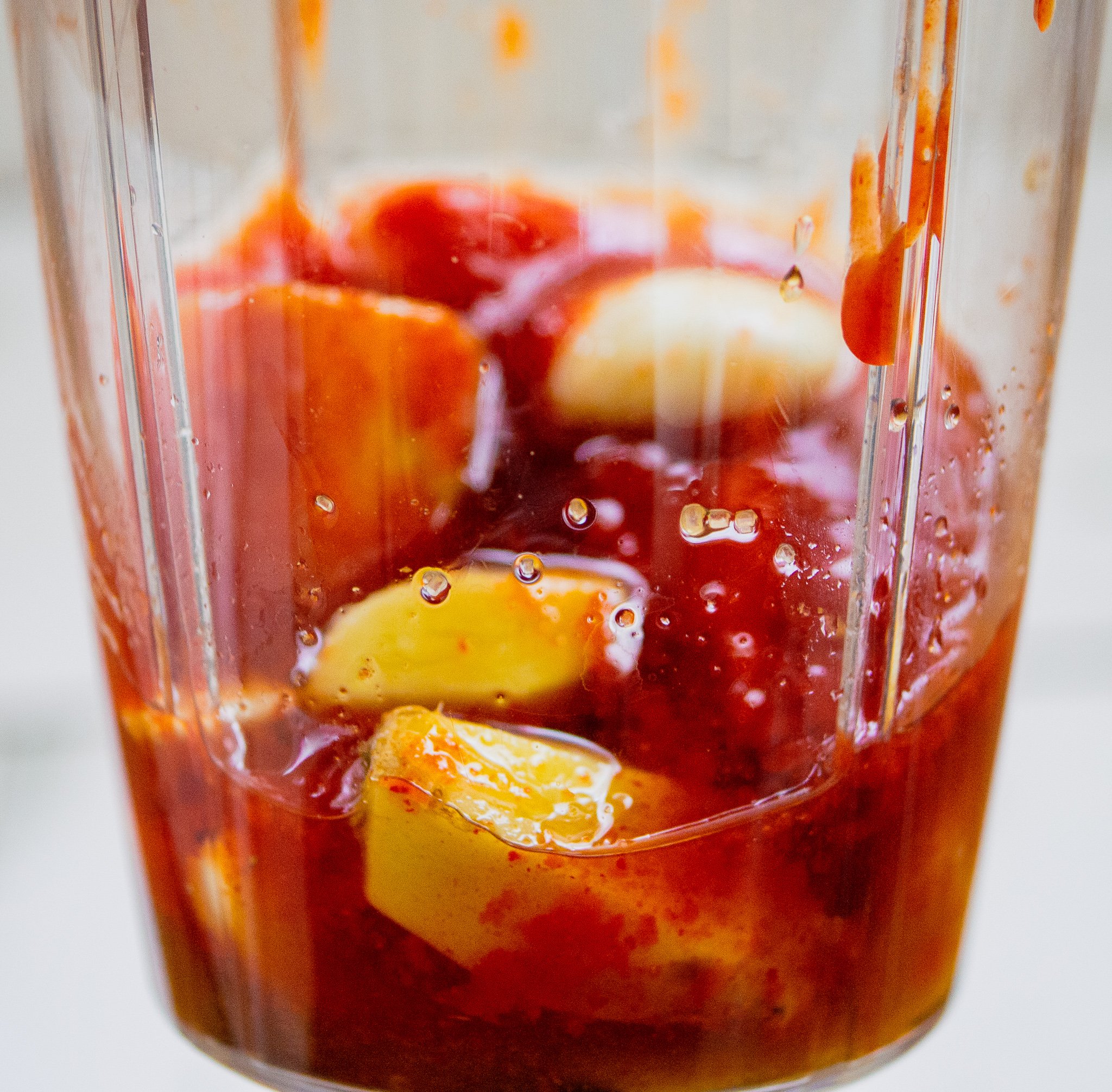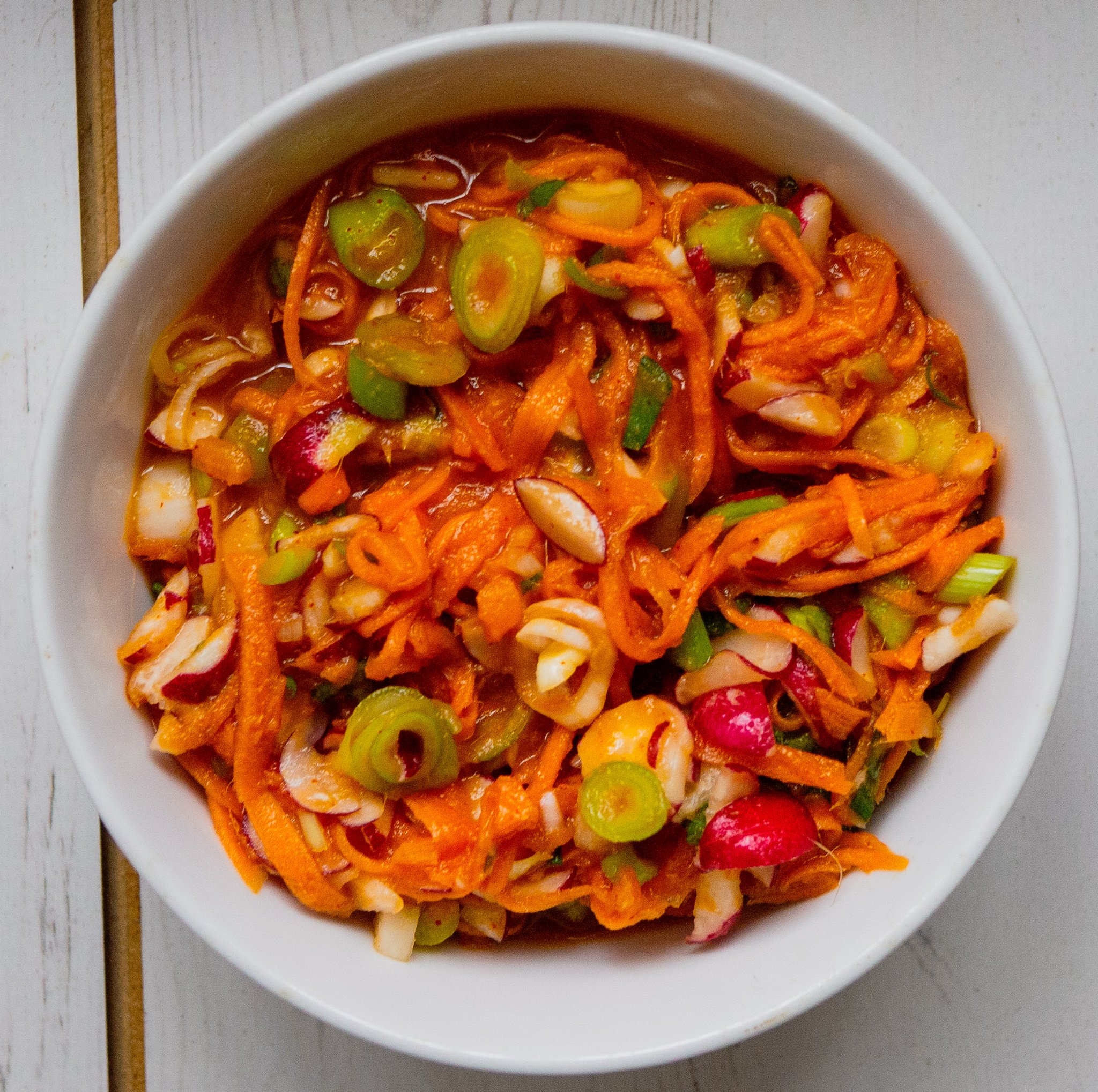Kimchi ( Vegan, Gluten-Free)
GLUTEN FREE II DAIRY FREE II SOY FREE II VEGAN II SESAME FREE II NUT FREE II EGG FREE
kimchi is a traditional Korean side dish of salted and fermented vegetables such as napa cabbage and Korean radish. Kimchi is also used in a variety of soups and stews. It’s a staple food in Korean cuisine, it is eaten as a side dish with almost every meal.
This recipe is a quick easy recipe using ingredients that you can find in the supermarket. It’s one of the yummiest fermented dishes of all time. It’s like saurekrauts spicer more colourful sister. I absolutely love it and always make this at home as store-bought kimchi is really expensive.
What is kimchi and is it good for you?
Kimchi is a traditional Korean dish made with salted fermented vegetables. It is nutrient-dense, contains probiotics, and may help support the immune system and reduce inflammation, among many possible benefits.
Kimchi has an excellent nutritional profile. The dish is low in calories but packed with nutrients like iron, folate, and vitamins B6 and K. Fermented foods like kimchi offer probiotics, essential for a healthy digestive system, active compounds in kimchi and other fermented foods may help fight inflammation, read more about the health benefits here.
Is kimchi spicy?
Some kimchi is spicy, while others are milder. In general, it has a distinct fermented flavor that plays well with all types of ingredients, especially rich, fatty flavors and salty items.
What exactly does kimchi taste like?
The fermentation process gives kimchi its sour, salty and umami flavors as well as a sharp acidity. Other tastes such as sweetness and tanginess come through while chewing the vegetables.
What do I eat kimchi with?
You can use kimchi in salads, in pancakes, noodles and as a side with just about any type of meal, only serve around 1/2 tbsp with each meal.
Here are some recipes for you to try.
Here are some more kimchi recipes
Ingredients
Tips
Here are some tips when making Kimchi:
Leave to ferment for 2/3 days at room temperature ( unless you live in the tropics, it needs to be in a warm place not boiling hot)
If you can see bubbles in the kimchi this means the fermentation process is taking place which is good.
Be sure to open the jar every day whilst it’s fermenting at room temperature to release the excess trapped carbon dioxide.
Always push the cabbage as far down the jar as possible until the red liquid/brine lines comes above the cabbage having that pickling liquid soak in the vegetables will extend its shelf life.
A sign that kimchi has aged well is when it loses its crispiness and gets mushy. (This will take a couple of weeks.)
Fizzy kimchi is perfectly natural and a positive sign of well-executed fermentation. If you don’t like the tingling taste then ensure that you regularly open the jar and stir the kimchi a little to release the extra carbon dioxide.
You will need one 1 litre Kilner jar or a few jam jars. ( I save mine up to use for jams and kimchi.)
If you are vegan just omit the fish sauce.
Makes enough to feed South Korea 1.5 hrs prep time
Step by step
Recipe
1 napa cabbage
10 radishes sliced
1 tsp sea salt
3 carrots peeled & grated
6 spring onions shredded
Brine ingredients
60 g ginger peeled
7 cloves garlic peeled
5 tbsp sriracha
2 tbsp brown sugar
6 tbsp rice vinegar
5 tbsp fish sauce ( omit if vegan )
Method
Cut the cabbage ( leaving 3 outer leaves) and place in a large bowl or saucepan, cover with water add the salt and leave for 1 hour. Then drain and pat dry.
While the cabbage is soaking in the salt bath, blend all the brine ingredients and mix with the radishes, spring onion and carrots.
Once the cabbage has been prepared as above mix all the ingredients together and pop into a Kilner jar. Make sure it's really packed in so the brine covers the cabbage. top with the outer leaves that you saved from earlier if using jam jars pop the lid on top.
Leave for 2 days at room temperature ensuring that you open and stir the kimchi daily ( only while fermenting), and then you can leave in the fridge.
You can keep kimchi in the fridge for months at a time, as there is no real shelf life, the longer you leave it the better it tastes. My last batch lasted 8 months in the fridge.
Food shopping tips
Are you looking to save money on your FREE FROM ingredients without shopping in several places just to save a buck? Take a look at well easy they have made it well easy to shop for healthy free from allergy-specific ingredients. Find everything you need all in 1 place with over 50 filters. You will be sure to find food for your dietary restrictions.
And it’s cheaper than the health stores or supermarkets, don’t believe me?
Take a look for yourself here. Check out my curated shopping list of all my recommended ingredients that I love to cook with. Here’s the link. Use my code KAM10 for £10 off your first order ( £50 minimum order for the first shop).
This blog contains affiliate links, which means I may receive a commission if you make a purchase using the links. I have personally vetted and used all the products that I recommend.
Looking for anything?
Browse all Articles
Latest articles
Latest Recipes
Follow along on Instagram
You might also like these recipes:



























